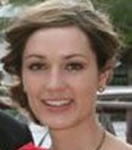Day 1 :
Keynote Forum
Areerat Suputtitada
Chulalongkorn University, Thailand
Keynote: Update Novel Therapies of Spasticity
Time : 09:30-10:00 am

Biography:
Professor Areerat Suputtitada, M.D. is Professor of Rehabilitation Medicine, full time working at Department of Rehabilitation Medicine, Chulalongkorn University and King Chulalongkorn Memorial Hospital in Bangkok, Thailand. She is the Director of Excellent Center for Gait and Motion at King Chualongkorn Memorial Hospital and Chair of Neurorehabilitation Research Unit of Chulaongkorn University. She has been involved in education, residency training, research, and clinical treatment related to rehabilitation medicine for over 20 years. Her subspecialties are botulinum toxin and neurolysis, gait and motion, pain, and neurorehabilitation.
Abstract:
Spasticity is a major challenge to the neurorehabilitation team. It manifests as an increase in stretch reflexes, producing tendon jerks and resistance appearing as muscle tone. Effects of spasticity range from mild muscle stiffness to severe, painful muscle contractures and repetitive spasms that can prevent or hamper function, cause pain, disturb sleep, and major difficulties for hygiene care.
However, spasticity can also be useful, perhaps allowing a person to stand or walk if optimal level of spasticity. It is imperative that management is always patient and function focused rather than reduction of spasticity only.
The novel therapy of spasticity with Botulinum toxin type A (BTA) has been published as level A evidences since 2008. Currently Extracorporeal Shockwave Therapy (ESWT), Transcranial Direct Current Stimulation (tDCS) and repetitive Transcranial Magnetic Stimulation (rTMS) are increasing evidences in efficacy of Spasticity management. Optimizing of all these novel therapies are challenging. The trick in practical management are using them intelligently including indications, contraindication, dosages, how and when to use each of them. The optimization of these novel therapies requires careful patient assessment and realistic goals, knowledge of the functional anatomy, and understanding of how these novel therapies work and how best using them. Several techniques, using electromyography, electrical stimulation, ultrasound guidance are aimed to increase the accuracy of targeting during BTA injection. Neurorehabilitation after BTA injection also enhance treatment outcomes. Basic and sophisticated instrumental balance and gait training, therapeutic exercises, constraint induced movement therapy, functional electrical stimulation, functional orthoses are also important to increase functional outcome. Repetitive transcranial magnetic stimulation (rTMS), transcranial direct current stimulation (tDCS), extracorporeal shock wave therapy (ESWT) are increasing evidences supported in using alone or using after BTA injection. Optimizing all these novel therapies in spasticity treatment is importance.
Keynote Forum
Amy Stein
Beyond Basics Physical Therapy, USA
Keynote: The role of physical therapy and pelvic floor dysfunction: Pelvic pain and incontinence
Time : 10:50-11:20

Biography:
Amy Stein is a leading expert and at the forefront of treating pelvic floor dysfunction, pelvic pain, women’s health, and functional manual therapy for men, women, and children. She is the Founder of Beyond Basics Physical Therapy in USA. She is the author of "Heal Pelvic Pain" an easy-read, self-help book and created a video called, “Healing pelvic and abdominal pain: The ultimate home program for patients and a guide for practitioners”. She is one of the Founders of the Alliance for Pelvic Pain, a patient-oriented educational retreat, and she serves as the Vice President of the International Pelvic Pain Society. She is a member of ISSWSH, the NVA, ISSVD, ICA, and the APTA Women’s Health section. She received her Master’s in Physical Therapy from Nova Southeastern University in the year 1999, and her Doctorate in Physical Therapy in 2013.
Abstract:
Context: Many conditions of pelvic and sexual dysfunction can be addressed successfully through pelvic floor physical therapy.
Aim & Objective: The aim is to provide an update on the role of pelvic floor physical therapy in the evaluation and treatment of pelvic and sexual dysfunctions and to update on peer-reviewed literature.
Method: To teach healthcare practitioners how to recognize pelvic floor conditions that can be addressed and treated by experienced pelvic floor physical therapists. To be able to differentiate overactive (hypertonic) pelvic floor disorders from underactive (hypotonic) pelvic floor disorders.
Results: Pelvic floor muscle overactivity and underactivity has been proven to be a successful option for pelvic and sexual dysfunction. Having an understanding of the role of the organs, nerves, fascia, and musculoskeletal system in the abdominopelvic and lumbosacral-hip region and how pelvic floor physical therapists can effectively evaluate and treat pelvic and sexual health.
Conclusions: Musculoskeletal causes of pelvic floor disorders affect a substantial proportion of men, women and children by pelvic floor physical therapy is a successful and non-invasive option. Pelvic floor examination by healthcare practitioners is essential in identifying when to refer to pelvic floor physical therapy. Further research is needed.
Keynote Forum
Frederick J. Goldstein
Philadelphia College of Osteopathic Medicine, USA
Keynote: Pain Management
Time : 10:00-10:30 am

Biography:
Frederick J Goldstein, PhD, FCP, is a Medical Scientist, Professor of Clinical Pharmacology, and Coordinator of Pharmacology at the Philadelphia College of Osteopathic Medicine (PCOM). He is on the National Board of Osteopathic Medical Examiners, and has been a writer and consultant for the National Board of Medical Education. He is a member of several national and international clinical pharmacology and pain societies. He serves on editorial boards of various clinical journals including the Journal of Opioid Management, Journal of the American Osteopathic Association, and the Journal of Clinical Pharmacology, and routinely reviews papers submitted for publication therein. He has many publications, and also received grants for human studies, including one from the American Osteopathic Association (AOA) to improve post-operative analgesia following abdominal hysterectomy; this study demonstrated that a combination of pre-emptive morphine plus post-surgical osteopathic manipulative treatment improved pain relief in the post-surgical period. He currently has a clinical investigation in progress to improve analgesia in chronic pain patients. He is a member of Compassion and Choices, a national organization which advocates the right-to-die for patients within certain conditions; last year he spoke at a meeting of the Philadelphia Chapter. Based upon his clinical knowledge about pain treatment, he created the word Suicidogen, and defines it as any factor that causes a person to think about, and possibly commit, suicide. He knows that poor pain management is a Suicidogen. Recently, due to the increased USA problem in opioid abuse, overdose and resultant deaths problem, he was given a leadership position at PCOM to enhance medical education in pain management.
Abstract:
Approximately two decades ago, there was significant national and international interest in improving delivery of pharmacotherapy for non-cancer chronic pain. Health professionals responded appropriately, and prescribing of opioids increased substantially. About 10 years ago, abuse of opioids began to accelerate with concomitant increases in emergency room visits, hospital admissions and, unfortunately, overdose deaths. One tragic result is an over-reaction such that some patients properly diagnosed and prescribed opioids may not be able to receive them at all or only in sub-therapeutic amounts. This should not occur, especially at the end-of-life. When opioids are with held or under prescribed, inadequate analgesia occurs and may become a suicidogen. Who is to blame? Prescribers? Pharmacists? Patients? Pharmaceutical Manufacturers? or Insurance Companies? All are involved to some degree depending upon the target medical condition. Addiction is a serious psychological condition. However, there is nothing inherent in the molecular structures of opioids that will convert a normal, well-adjusted patient with no pre-existing psychological conditions into a drug-seeking opioid addict. Many non-opioid drugs are available for treatment of pain including antidepressants, anticonvulsants, and capsaicin products, as well as acetaminophen and aspirin and related NSAIDs. Non-pharmacologic options for treating chronic pain include biofeedback, osteopathic manipulation, acupuncture and professional counseling for stress reduction. For some patients, strengthening certain muscles may help restore normal function and thus reduce pain. Patients should be properly and adequately treated for pain, especially at the end of life. Otherwise, providing inadequate analgesia can become a suicidogen.
- Track 1 : Diet and Physical Health
Track 2: Occupational Therapy and Physical Rehabilitation
Track 3: Sports Injury and Rehabilitation
Session Introduction
Milo Sewards & Heidi Ojha
Associate Professor at Temple University, USA
Title: Guideline adherent triage and management for low back pain
Time : 11:20-12:30

Biography:
Milo Sewards, MD, is an Associate Professor at Temple University in the Department of Orthopaedic Surgery and Sports Medicine. He completed his medical education at Jefferson Medical College in Philadelphia, served in the Military at Naval Hospital in Beaufort, SC and completed his Residency in Orthoapedic Surgery in 2005 at Temple University Hospital. Dr. Sewards was board certified in Orthopaedic Surgery in 2007 and is a Fellow of the American Academy of Orthopaedic Surgeons. He directs the Ortohpaedic Surgery Residency program at Temple University Hospital and has published multiple articles in peer reviewed journals related to his field of work.
Heidi Ojha is an Assistant Professor at Temple University in the College of Public Health. She conducts research in guideline adherent conservative musculoskeletal pain evaluation and management. She has published numerous articles on primary care in peer reviewed journals, received grants to fund her research, and is currently conducting a randomized controlled trial on the first risk stratification program for employees with musculoskeletal pain in the country at Temple University.She has received training from Keele University, where Jonathon Hill developed the STarT tool, to guide her primary care research in the USA.
Abstract:
In primary care, low back pain is the second most frequent symptom-related cause for patient visits. Management of low back pain is increasingly relying on guideline discordant care, resulting in growing health care costs, and risks to the patient including iatrogenic harm. Recent evidence suggests the STarT back screening tool is a safe and effective strategy to guide management of low back pain in primary care. Although the Keele STarT back screening tool is frequently utilized in Europe, it is in its infancy in the United States. This presentation will assist attendees in how to serve as the point of patient contact and stratification with use of this screening tool, and will describe plans for future tool development. The beginning of the program will be instructional, outlining practice guidelines, the current large variability in guideline adherence, and will include how to administer and interpret results of the STarT tool to match interventions to the patient’s prognostic category. The second half of the presentation will focus on how clinicians, educators, and researchers, might transition from a biomedical approach to a biopsychosocial approach in managing low back pain, and barriers to implementing these practice guidelines in education, health care delivery, and policy. Potential solutions will be discussed through panel discussion and audience participation. Multiple patient case examples will illustrate decision-making on appropriate timing of referral, indications for imaging, guideline recommended pharmacological management, and use of biopsychosocial language to increase patients’ confidence in resuming activity. The session will end with sharing multiple resources to identify and/or train support personnel to implement this evidence based approach to primary care management of low back pain.
Areerat Suputtitada
Chulalongkorn University and King Chulalongkorn Memorial Hospital, Thailand
Title: Myofascial Pain Syndrome and Sensitization: Update Evidences and Experiences

Biography:
Areerat Suputtitada, M.D. is Professor of Rehabilitation Medicine from Chulalongkorn University and King Chulalongkorn Memorial Hospital, Bangkok, Thailand. She is the Director of Excellent Center for Gait and Motion at King Chualongkorn Memorial Hospital and Chairperson of Neurorehabilitation Research Unit of Chulalongkorn University. She has been involved in education, residency training, research, and clinical treatment related to rehabilitation medicine for more than 20 years. She was invited as international speaker more than 80 times around the world. She received 18 national and international awards, and published more than 60 national and international articles in several areas of Rehabilitation Medicine including Neurological Rehabilitation, Spasticity and Dystonia, Pain, Gait and Motion, and Sport and Exercise Medicine. She has been elected and appointed to important positions in the ISPRM such as the Chairperson of ISPRM Women and Health Task Force and ISPRM International Exchange Committee.
Abstract:
Myofascial pain syndrome (MPS) is a major musculoskeletal pain that occur in every age group, and has been associated with numerous pain conditions including radiculopathies, osteoarthritis, disc syndrome, tendonitis, migraines, tension type headaches, computer- related disorders, spinal dysfunction, and pelvic pain. Myofascial pain is identified by palpating skeletal muscle for myofascial trigger points (MTrPs). A MTrP is classically defined by Professor Janet G Travell and Professor David G Simons as "a hyperirritable spot in skeletal muscle that is associated with a hypersensitive palpable nodule in a taut band’’. Although the specific pathophysiological basis of MTrPs development and symptomatology is unknown, there are evidences of histological, neurophysiological, biochemical, and somatosensory abnormalities. These emerging findings suggest that myofascial pain is a complex form of neuromuscular dysfunction consisting of motor and sensory abnormalities involving both the peripheral and central nervous systems. Sensitization in corresponding spinal segments plays a major role in the formation of continuous pain in a given part of the body. The term called by Professor Andrew A. Fischer for this phenomenon is “spinal segmental sensitization” (SSS). SSS is a hyperactive state of the spinal cord caused by irritative foci sending nociceptive impulses from a sensitized damaged tissue to dorsal horn neurons. The clinical manifestation of dorsal horn sensitization includes hyperalgesia of the dermatome,pressure pain sensitivity of the sclerotome and myofascial trigger points within the myotomes, which are supplied by the sensitized spinal segment. There are significant elevated levels of substance P, calcitonin gene-related peptide (CGRP),bradykinin, tumor necrosis factor-α (TNF-α) and interleukin-1β (IL-1β), serotonin, and norepinephrine in the vicinity of the active myofascial trigger point. Overall, pH was significant lower in the active trigger point. The mechanism consists of the nociceptive stimuli generated in the sensitized areas bombarding the dorsal horn of the spinal cord. This causes central nervous system sensitization with resultant hyperalgesia of the dermatome and sclerotome and spreads from the sensory component of the spinal segment to the anterior horn cells, which control the myotome within the territory of the SSS. The development or amplified activity of MTrPs is one of the clinical manifestations of SSS. The Segmental Desensitization treatment consists of injection of local anaesthetic agents in the involved dermatome to block the posterior branch of the dorsal spinal nerve along the involved paraspinal muscles. Extracorporeal shockwave therapy (ESWT) and High Intensity Laser (HTL) also play a role as desensitization. Prevention of recurrence should focus on appropriate ergonomic changes common in patients’ day to-day activities to avoid repetitive stress to the injured muscles. In conclusion, MPS, a common pain syndrome consists of local pathology and SSS. Hence therapeutic approaches require varieties of techniques for eradiation of trigger point and desensitization of the whole related spinal segment.
Vicky Stewart
Australian Catholic University, Australia
Title: Clinical effectiveness of a physiotherapy-led vestibular hospital service comparing immediate and delayed intervention pathways
Time : 15:30-15:50

Biography:
Vicky Stewart is completing her PhD at the Australian Catholic University in Brisbane, Australia. She is a Senior Vestibular Physiotherapist in Queensland Health
and has more than seven years clinical experience in the vestibular fi eld. She has published a paper on the construction and validation of the vestibular screening
tool for use in the acute hospital setting.
Abstract:
Background: Vestibular disorders are common presentations to the hospital emergency department and are not managed optimally.
Aim: To investigate clinical effectiveness of a physiotherapy-led, hospital-based vestibular service by determining initial and longer term outcomes and comparing immediate/delayed intervention pathways.
Design: A pragmatic, prospective observational study reporting baseline, discharge and follow-up outcomes. Settings: Hospital based vestibular rehabilitation service. Participants: Adults (n=193) presenting to hospital with non-emergent dizziness (mean age=64.21±15.28; female=60%).
Methods: Physiotherapy vestibular diagnostic tests categorised patients as vestibular or non-vestibular. Vestibular rehabilitation commenced immediately (within 48 hours of hospital presentation) or was delayed on the basis of referral and wait-list for an outpatient service (average 22 days). Measures of dizziness impairment (vestibular screening tool and dizziness handicap inventory),
functional vestibular ocular reflex (Dynamic Visual Acuity), static balance, gait velocity and the functional gait assessment were recorded at initial presentation, discharge and three months post-discharge.
Results: Patients had significantly reduced dizziness and significantly improved functional gait at discharge, and was maintained three months post (p=0.000). Both immediate and delayed intervention groups reported signifi cantly reduced dizziness impairment (p=0.000) but only those in the immediately group signifi cantly improved in all functional mobility measures (p≤0.005). Resultant
symptoms and functional impact of a vestibular disorder was not significantly subside to normal levels without physiotherapy, even three weeks after presenting to hospital.
Conclusion: Physiotherapy vestibular rehabilitation was clinically effective in managing patients presenting to hospital with suspected vestibular dysfunction and immediate referral to physiotherapy vestibular therapy should be considered.
Tina Cloney
Millikin University, USA
Title: Behavioral change strategies conducive to reducing rates of disease and disability and promoting rehabilitation and daily functioning
Time : 16:10-16:30

Biography:
Tina Cloney is a Health and Nutrition Professor in the Department of Exercise Science and Sport. She has a Bachelor’s degree in Health, Nutrition, and Dietetics; a Master’s degree in Community Health, and a Doctoral degree in Public Health, Health Education and Health Promotion. She is also a Board Certified Registered Dietitian, Board Certifi ed Sport Specialist Dietitian, and a Board Certified Diabetes Educator. Before joining Millikin, she worked for over 20 years as an Educator
and Manager in various clinical and community capacities.
Abstract:
Despite advances in the prevention, early detection and treatment of disease, heart disease, stroke, cancer, diabetes and depression continue to result in reduced quality of life, premature death and disability.Research continues to grow and provides strong evidence of the impact of both diet and exercise in disease prevention, disease management, and rehabilitation. Despite the evidence, many patients/clients are overwhelmed and uncertain of healthy, safe and effective approaches for promoting disease management, rehabilitation, long term health and wellness. Lifestyle coaching and goal setting are vital for promoting client commitment, recovery, and success. This presentation will outline the various nutrition and physical activity related behaviors conducive to reducing rates of disease and disability, promoting daily functioning, overall health and wellness. Behavior change education strategies for individual clients and clients in the group setting will be discussed.

Biography:
David T Denhardt did his undergraduate work in Chemistry from Swarthmore College, USA and earned his PhD in Biophysics from Caltech in 1965. He was a Faculty Member (performing both research and teaching) at Harvard, McGill, University Western Ontario and Rutgers University. He has 250 publications in PubMed in Molecular and Cell Biology and Systems Physiology. He serves as Editorial Board Member of many reputed journals.
Abstract:
“Stress” can be broadly defined as any event that challenges homeostasis to such an extent that the body and brain cannot respond adequately, thus resulting in maladjusted physiology and behavior. Much of the response is mediated via the HPA(hypothalamus-pituitary-adrenal) axis and results in the production of glucocorticoids and other effector hormones. DNA is compacted into chromatin, the genetic constituent of chromosomes, by complexing with a small family of proteins called histones. A dozen or so enzymes have been characterized recently that can modify nucleotides in the DNA (methylation of certain cytosines, often in CpG islands) and amino acids in histones, usually strategically located lysines near promoter regions, which can be modified by the addition of methyl or acetyl groups. These and other modifications, called marks, have the epigenetic (on top of the genetics) consequence of increasing or decreasing the amount of the protein made by that gene. Several types of RNA molecules can also epigenetically regulate gene expression.These epigenetic regulators will be briefl y reviewed. Severe or repeated concussions sustained in contact sports can result in chronic traumatic encephalopathy (CTE), causing prolonged or permanent changes in personality and possibly leading to an early death. Selected research by O Almeida, W Brown, S Horsburgh, and E Lagarde will be briefly discussed to illuminate the epigenetic mechanisms that could contribute to concussion-induced impairments in the quality of life. What is known about the relation between post-concussion syndrome and post traumatic stress disorder following traumatic brain injury will be summarized.
Wilton Remigio
Misericordia University, USA
Title: Thermal medicine, the heat shock response and the modulation of infl ammation: A therapeutic come back in a remix
Time : 16:50-17:10

Biography:
Wilton Remigio has completed his Doctoral work at Loma Linda University in the year 2010. He is one of the authors of a book on advances in ion channel purification. He is a Professor at the College of Health Professions of Misericordia University, USA with concurrent research affi liations at Duke University. His research focuses on the use of therapeutic thermal modalities in inflammatory processes.
Abstract:
Thermal therapies have been constitutive components of most ancient systems of medicine and their use is re-emerging. New evidence has captured the interest in the use of therapeutic heat for its ability to sensitize aberrant cells to radiation injury, provide co-stimulatory signals to stir immunocompetence, to precondition tissue in defense against various endogenous injuries and to downregulate pro-inflammatory genes. Copious studies have investigated the modulation of both local and systemic inflammation by exogenous, local or systemic heat applications and these modalities should reclaim their place in the physical medicine shack of available therapeutic tools. The induction of heat stress markedly elevates tissue expression of many heat shock proteins, which comprise a superfamily of molecular chaperones found in most tissues. Heat shock proteins are highly cytoprotective molecules eliciting the appearance of defended tissue phenotypes against several injurious subcellular stresses. The heat shock response (HSR) can powerfully modulate inflammation by triggering over expression of several heat shock protein which in turn mediate the inhibiting the expression level of factors such as NF-kB and thus a cascade of pro-infl ammatory gene profiles. In this presentation, we reviewed the biology of thermal stresses, the current evidence substantiating the uses of heat as an adjunct therapy in several pathological processes with a focus on inflammation.
Susan Giblin
Researcher at Kitman Labs Ltd, Ireland
Title: Motion Capture Based Assessment of Athletic Injury Risk
Biography:
Susan specialises in neuromotor assessment, completed her MSc at the University of Edinburgh, undertaking doctoral research at the Institute of Coaching and Performance at the University of Central Lancashire. She has worked in a research and development capacity with Kitman Labs Ltd. and published in reputed international journals.
Abstract:
Objective: In this paper we present a novel low cost computer-vision athletic movement assessment (overhead squat). The aim of the study was to investigate the reliability of a low cost markerless motion capture system (Capture) against an industry gold standard (Vicon). Rationale: Overhead squat is commonly used to detect asymmetry and immobility during functional movement. Research has shown the overhead squat to be the most discriminant task of the Functional Movement Screen (FMS) i.e. an individual’s ability on the overhead squat is indicative of their overall FMS score and thus injury risk status. Unfortunately, to date, the overhead squat movement has typically relied on subjective, observation based assessment. We suggest that objective and automated assessment of the overhead squat movement could provide a more practical tool for coaches to identify the intricate movement parameters associated with increased injury risk (i.e. knee valgus/varus, trunk flexion, hip translation in the sagittal plane). Results:The findings suggest that low-cost markerless motion capture has potential to provide an objective method for assessing lower limb squat mechanics and trunk control in an applied sports setting. Furthermore, the outcome of the study warrants the need for future research to examine more fully the potential implications of the use of low-cost markerless motion capture in the evaluation of dynamic movement for injury prevention.
Guadalupe Genis-Gonzlez
Fremont College School of Sports and Rehabilitation Therapy, USA
Title: RSM-Russian sports massage

Biography:
Guadalupe Genis-Gonzalez is 27 years old is a Licensed Massage therapist and has completed her Associate of Science Degree in Sports and Rehabilitation Therapy and is presently pursuing her Bachelor’s degree in Business leadership from Fremont College where she is also a Charter Member of the Alpha Beta Kappa Honor Society and Student Ambassador. She has previous experience working with professional athletes and worked two seasons with the Los Angeles Sparks WNBA Team and where she also completed her Sports Medicine Internship. She is looking forward to making her special techniques known through the world of Sports Medicine and Rehabilitation therapy.
Abstract:
Russian Sports Massage (RSM) is an advanced manual technique for reducing pain due to Neuro-Muscular Dysfunctions and for maintaining and enhancing functional performance. It is very rare to find an MT who is certified to perform the therapy in California. Learning to work with athletes and witnessing their performance increase as a result of our educated touch is an inspiring and memorable experience. Russian sports massage is strictly performed when using to help athletes reach Peak performance. For instance using, oil and a 14-16 inch bolster is key to this therapy. RSM can also be applied with any modality and be looked at as a therapeutic approach which is very unique as well. Learning how to incorporate these techniques towards anyone who is suffering with pain and any unknown or undiagnosed pathology/disease can be treated and receive comfort. RSM focuses on working with the Nervous System and while being performed the therapist works with the midlines of the body. The person receiving RSM should wait 2-4 hours after a meal or 6 to 8 hours after working out to receive therapy. All Massage interrupts digestion and interferes with rehabilitation after a workout.
